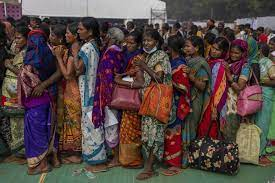India’s ‘untouchable’ women face discrimination
Seema as well as her hubby performed rather effectively when they very initial opened up a samosa delay in the regional market of a community in Bihar condition, northeastern India.
However after that various other suppliers discovered that Seema was actually.
They yelled at her clients for purchasing her samosas. They endangered her hubby for "contaminating" the marketplace through marketing meals ready through her. She tolerate it for months prior to quiting.
Exactly just what possessed Seema performed incorrect? She possessed been actually birthed a Dalit, a participant of the "untouchables", the most affordable team in India's old as well as currently formally outdated caste body.
Seema really did not appearance, speak or even act any type of in a different way. However somebody possessed discovered her household label, which suggested she was actually come down coming from pig farmers, a task just performed through Dalits. That sufficed.
A stiff work hierarchy
While there's some argument around English colonialism enhancing it, the beginnings of India's caste body return countless years, as well as are actually greatly braided in Hinduism, the religious beliefs complied with through around 80% of India's populace.
Caste is actually basically the stratification of individuals right in to a stiff work hierarchy.
Inning accordance with the Manusmriti, thought about among Hinduism's essential publications of legislation, individuals are actually birthed right in to among 4 castes, depending upon their carry out in past times lifestyles.
One of the absolute most virtuous return as Brahmins, the caste of clergymans as well as historians. Following are actually the Kshatriyas, that are actually ascribed to become rulers as well as warriors. 3rd are actually the Vaishya, the musicians as well as investors. 4th are actually the Shudras, just sufficient to perform handbook work.
Listed below every one of all of them are actually the Dalits, the "untouchables", omitted coming from all of tasks other than the worst-paid as well as very most derogatory - on the pretense of preserving the religious pureness of those in greater castes.
India formally outlawed caste-based discrimination in 1950. However it proceeds to become a truth of lifestyle for the approximated 200 countless India's 1.4 billion populace that are actually Dalits.



